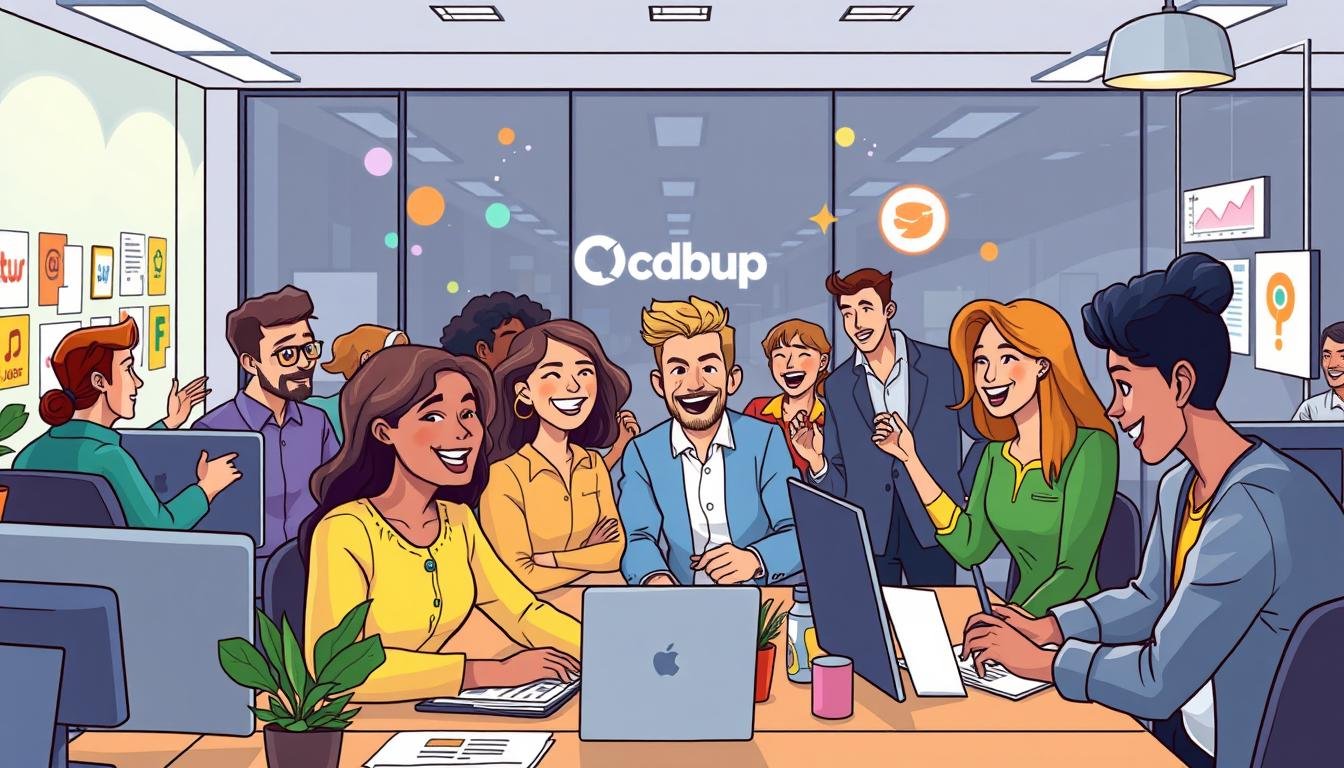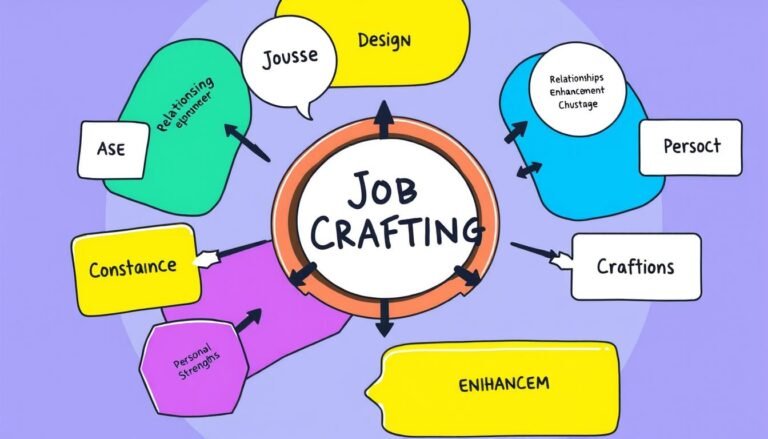Employee Advocacy: How Organizational Psychology Creates Brand Ambassadors
Ever wondered how some companies have so many employees excitedly talking about their brand? That’s the magic of employee advocacy. But what makes these regular staff members become passionate brand ambassadors?
Employee advocacy is more than just a buzzword. It’s a smart strategy that uses organizational psychology to turn your team into your best marketing tool. By understanding what drives your employees, you can create a culture where they naturally promote your brand.
In today’s digital world, employee opinions matter more than ever. Research shows that 92% of people trust advice from friends over a brand’s ads. This trust leads to real benefits, with companies using advocacy programs seeing 26% more sales each year than those that don’t.
So, how does organizational psychology help make these brand champions? It’s about matching personal values with company goals, building a sense of belonging, and letting employees share their real experiences. When done correctly, it benefits both the employees and the brand’s visibility.
Key Takeaways
- Employee advocacy leverages organizational psychology to create authentic brand ambassadors
- 92% of consumers trust individual recommendations over brand marketing
- Companies with advocacy programs generate 26% more revenue annually
- Employee-shared content receives 8 times more engagement than brand-shared content
- Effective advocacy programs align personal values with company goals
- Social media is a powerful platform for employee advocacy and employer branding
Understanding Employee Advocacy in the Digital Age
Employee advocacy has changed a lot in the digital world. Now, workers can support their company on social media anytime, anywhere. This change has made a big difference in how brands connect with people.
Defining Employee Advocacy
Digital advocacy lets staff share company content on their personal networks. It’s more than just marketing. It uses real voices to build trust and reach more people.
Organizational Psychology Meets Brand Promotion
Psychology and branding come together here. Companies work to build trust in their message. They encourage staff to share on social media, creating brand champions.
Power of Authentic Voices
People trust what employees say about brands. A study showed 63% of young adults trust influencer opinions more than company claims. Personal posts from employees get 64% more engagement than generic ones. This shows the power of real voices in marketing.
“Employee advocacy allows companies to tap into workers’ networks, expanding reach exponentially.”
The benefits are clear. Companies with high employee engagement do better by 202%. Posts from employees reach 561% more people than company channels alone. By using digital advocacy, brands can grow their visibility, credibility, and success.
The Psychology Behind Effective Brand Ambassadors
Creating effective brand ambassadors starts with empowering employees and building a strong company culture. Companies spend over $750 billion on ads every year worldwide. But, the power of real employee voices is often overlooked.
Studies reveal that up to 30% of employees don’t give their full effort. This hidden potential could greatly improve how well a company does if used right. After COVID, this number might have jumped to 70-80% because leaders didn’t meet expectations.
Good employer branding means matching company values with employee values. This leads to better engagement, productivity, and keeping employees longer. Companies that get this right save on turnover costs and have a loyal team.
“Employees who feel valued and connected to their organization’s mission are more likely to become enthusiastic advocates.”
UBS’s success story shows the power of brand ambassadors. They made over 70,000 brand ambassadors, boosting their brand value by 51% in three years. This effort helped the bank grow fast and make more money.
| Aspect | Impact |
|---|---|
| Employee Advocacy | 51% increase in brand value |
| Time Frame | 3 years |
| Number of Brand Ambassadors | Over 70,000 |
| Result | Rapid growth and profitability |
To keep things moving, companies need to update their employee advocacy programs. By making employees proud, loyal, and happy, companies can build a strong team of brand ambassadors. These ambassadors will share the company’s values and mission in a real way.
Benefits of Employee Advocacy Programs
Employee advocacy programs bring many benefits to both companies and their employees. They help increase brand visibility, improve engagement, and boost business growth.
Increased Brand Visibility and Credibility
Employee advocacy greatly increases a company’s reach. Employees have 10 times more social media connections than their employers. This means more people see the brand, making it more visible and credible.
Enhanced Employee Engagement and Job Satisfaction
Advocacy programs make employees feel valued and purposeful. By letting staff promote the brand, companies create a more dedicated team. This leads to happier employees and better engagement.
Improved Recruitment and Talent Acquisition
A strong advocacy program helps in hiring the best talent. 84% of job seekers look at a company’s reputation before applying. When employees share good experiences, it attracts top talent and helps in finding the right people.
Boosted Social Media Reach and Engagement
Employee advocacy makes a company’s social media presence much stronger. When employees share content, it makes the brand seem more real and personal. This approach increases engagement and builds trust with potential customers.
| Benefit | Impact |
|---|---|
| Brand Visibility | 10x more social media connections |
| Consumer Trust | 63% prefer companies reflecting personal beliefs |
| Recruitment | 84% consider company reputation in job search |
| Purchase Decisions | 65% influenced by company leaders’ actions |
Implementing a Successful Employee Advocacy Strategy
Building a strong employee advocacy program needs careful planning. Start by getting support from top leaders. Set clear goals for your program.
Train your team well. Teach them social media skills. Show them how to create engaging posts. Explain why social media is important for the company.
A good advocacy plan brings real results. Studies show content shared by employees gets 2x more clicks than company posts. When more staff join in, sharing jumps 25%.
This is important as younger workers enter the job market.
Top companies lead the way in advocacy strategy:
- Dell asks staff to share company news and make their own content
- IBM rewards employees for advocacy efforts
- Microsoft provides in-depth social media training
- Cisco encourages employee-generated expert content
Set clear goals for your program. Track lead generation, hiring success, brand awareness, and social media reach. Measure top contributors and engagement levels. With the right approach, your team can become powerful brand voices.
| Company | Advocacy Strategy | Key Focus |
|---|---|---|
| Dell | Employee content sharing | Tech expertise |
| IBM | Recognition program | Incentives |
| Microsoft | Social media training | Skill development |
| Cisco | Employee-generated content | Thought leadership |
Employee Advocacy: Leveraging Social Media for Brand Growth
Social media platforms are great for growing your brand through employee advocacy. By using your team’s power, you can reach more people and connect with them in a real way.
Choosing the Right Social Media Platforms
Picking the right social media is key for employee advocacy. Think about where your audience hangs out and what platforms fit your brand’s goals. For example, LinkedIn is good for B2B, while Instagram is better for visual brands.
Creating Shareable Content for Employees
Make content that your team and audience will love. This could be company news, industry tips, or a peek behind the scenes. Remember, employee posts get 8 times more engagement than company posts.
Encouraging Authentic Employee-Generated Content
Let your team create their own content. This kind of content feels real and connects better with people. A study by Edelman Trust Barometer shows 61% trust info from company employees. So, encourage your staff to share their stories, skills, and brand love.
| Employee Advocacy Impact | Percentage Increase |
|---|---|
| Brand Visibility | 26% |
| Web Traffic | 500% |
| Lead Generation | 25% |
By using social media, making shareable content, and encouraging employee posts, brands can really grow. This method boosts your visibility and trustworthiness. It also makes your marketing better and keeps your team happy and loyal.
Measuring the Impact of Employee Advocacy Initiatives
Employee advocacy programs can greatly increase brand visibility and engagement. To see how well they work, businesses need to track important metrics and measure ROI. This means looking at various indicators to see if the program is successful and where it can get better.
Measuring how well content works is key. This includes checking if messages are effective and what content people like most. By looking at these numbers, companies can make their content better and get more people involved.
Who’s participating in the program is also important. Finding out who the top advocates are and how often they share content helps see if the program is working. When more people participate, it usually means the brand is getting more attention and making real connections.
| Metric | Description | Impact |
|---|---|---|
| Conversion Rates | Post-to-conversion ratio | Directly ties advocacy to sales |
| Lead Generation | Number of leads generated | Measures program’s ability to attract potential customers |
| Reach and Engagement | Audience size and interaction levels | Indicates brand exposure and audience connection |
To really get how employee advocacy affects a business, companies should use methods like attribution modeling and benchmarking. This shows how advocacy efforts lead to more sales and proves their worth in the marketing mix.
“Brand messages shared by employees have a 561% greater reach and eight times more engagement than those shared on the brands’ social media channels.”
By always checking these numbers, companies can make their employee advocacy programs better. This ensures they bring the most value and help the brand grow in the long run.
Overcoming Challenges in Employee Advocacy Programs
Employee advocacy programs face many challenges. Companies must deal with privacy issues, keep their brand consistent, and motivate their employees. Let’s look at these challenges and how to solve them.
Addressing Privacy Concerns and Social Media Policies
Social media policies are key for employee advocacy. They guide employees on what’s okay online. A study found 30% of employees don’t share company info for business reasons. To fix this:
- Create clear, easy-to-understand social media policies
- Offer training on safe social media practices
- Provide pre-approved content for sharing
Maintaining Consistency in Brand Messaging
Keeping a consistent brand image is crucial. Yet, 15% of employees fear sounding like “company robots” when sharing work content. To keep consistency without losing authenticity:
- Develop a brand voice guide for employees
- Encourage personal anecdotes related to company values
- Curate a mix of company and industry-relevant content
Keeping Employees Motivated and Engaged Long-term
Keeping employees motivated is essential for advocacy success. Companies lose $37 billion hourly due to unengaged employees. To boost and keep engagement:
- Offer incentives for participation
- Recognize top advocates regularly
- Provide ongoing training and support
- Communicate program impact to show value
| Challenge | Solution |
|---|---|
| Privacy Concerns | Clear social media policies |
| Brand Consistency | Brand voice guide |
| Employee Motivation | Incentives and recognition |
By tackling these challenges, companies can build strong employee advocacy programs. These programs benefit both the brand and its employees.
Case Studies: Successful Employee Advocacy in Action
Employee advocacy programs have changed the game for many companies. Let’s look at some amazing success stories and examples of brand ambassadors. They show how powerful employee voices can be.
Sumo Logic’s employee advocacy campaign was a huge success. They got $670,561 in free media value. They also had 129,452 clicks and 726,642 shares from their team members. This shows how much impact employees can have on a brand’s visibility and engagement.
BeachFleischmann, an accounting firm, grew a lot after starting an employee advocacy program. They saw a 1,342% jump in website traffic from LinkedIn in just one year. They think this extra online traffic brought in an extra $200,000 in new business.
Reebok used a creative approach with a custom hashtag #FitAssCompany. Employees post photos wearing Reebok products. This blends advocacy with marketing, making the brand more relatable and authentic.
| Company | Results |
|---|---|
| Buurst | 700 website clicks, 1,600 social interactions, 2.5 million reach in 4 months |
| Contrast Security | 10,000 social interactions, 3,000 clicks in 9 months |
| Magna5 | 2,200 website clicks, 3,600 social interactions, 7 million reach in 1 year |
These examples show how employee advocacy can lead to big brand growth and engagement. By letting employees share real content, companies can reach more people. This helps build stronger connections with their audience.
Conclusion: Empowering Employees as the Voice of Your Brand
Employee empowerment is a game-changer for modern organizations. It helps companies unlock their workforce’s full potential as brand ambassadors. This approach can lead to a 561% increase in brand visibility and an 8x boost in content engagement.
Employee advocacy goes beyond marketing. It shapes a company’s success. Companies with high employee engagement are 21% more profitable than others. They see a 26% year-over-year revenue growth with active advocacy programs.
Using employees’ authentic voices builds trust and credibility. A study shows 76% of people trust content shared by their network more than a company’s. This trust is key, as 53% of decision-makers are more likely to buy from a company with employee-shared content. Empowering employees to be your brand’s voice creates a strong, authentic connection with your audience. This connection drives real business results.
Source Links
- Employee Advocacy Programs: Turning Your Team into Brand Ambassadors
- The Power of Employee Advocacy: Turning Your Team into Brand Ambassadors
- Employee Advocacy: 5 steps to get your employees promoting your brand | Interact software
- What is employee advocacy and does it really work?
- Amplifying Brand Growth: Unleashing the Power of Employee Advocacy in the Digital Age
- Your hidden brand powerhouse – 4 steps to every employee being a proactive brand ambassador
- The Psychology of Employer Branding by Navon International
- The Marketing Psychology Behind Celebrity Endorsements
- Top 10 employee advocacy benefits
- Employee Advocacy on Social Media: Benefits, Examples & Strategies
- Successful employee advocacy starts with this
- Employee Advocacy Guide: Create a Winning Strategy
- The Power of Employee Advocacy in Modern Marketing
- Harnessing the Power: Encouraging Employee Advocacy to Boost Your Company’s Brand Visibility
- Employee Advocacy: The Complete Guide
- From Engagement to ROI: How to Measure Employee Advocacy Success – Oktopost
- Council Post: To Measure The Full Impact Of Employee Advocacy, Soften Your Focus
- Overcoming Major Obstacles in Employee Advocacy Programs
- Encourage Employee Advocacy In 2024: Detailed Strategies & Techniques
- What are the benefits and challenges of using employee advocacy programs to boost your employer brand?
- Employee Advocacy Examples: 8 Brands That Did It Right
- Best Employee Advocacy Ideas & Examples You Need to Try
- Successful employee advocacy programs: 12 examples
- Employee Advocacy: Empower Your Team to Tell Your Story
- Employee Advocacy : Empower Your Workforce







